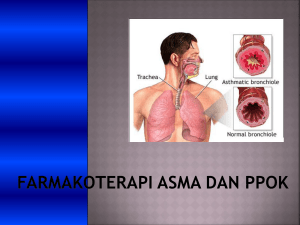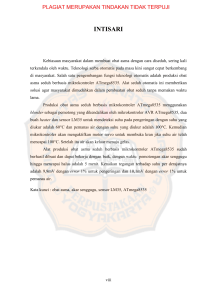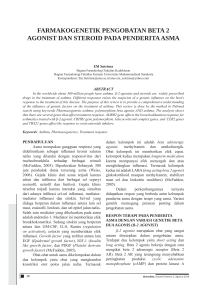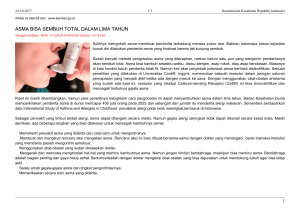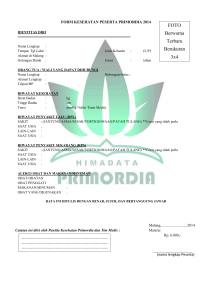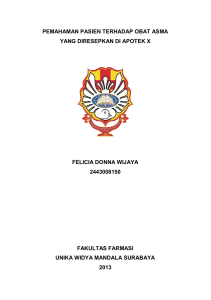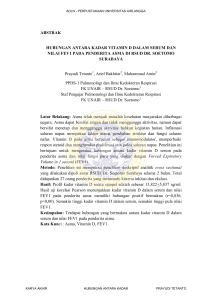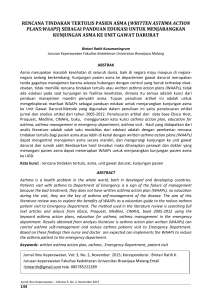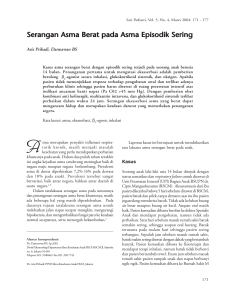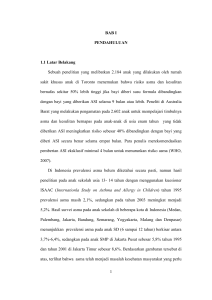SEL-SEL PADA ASMA - Pulmonologi dan Kedokteran Respirasi
advertisement
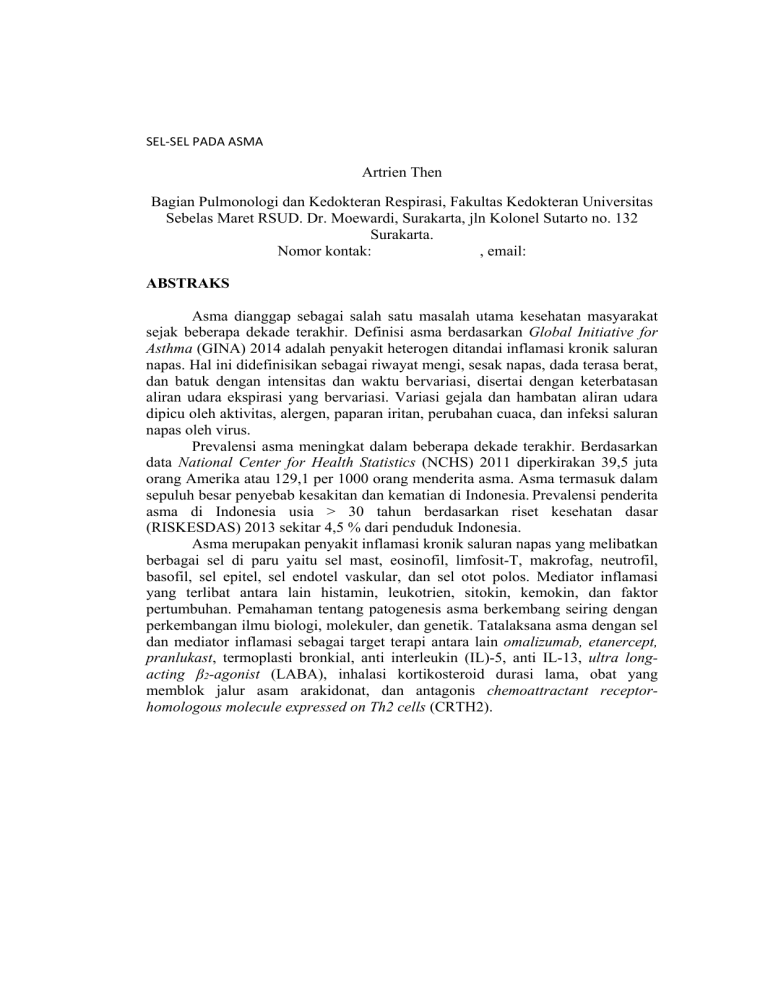
SEL‐SEL PADA ASMA Artrien Then Bagian Pulmonologi dan Kedokteran Respirasi, Fakultas Kedokteran Universitas Sebelas Maret RSUD. Dr. Moewardi, Surakarta, jln Kolonel Sutarto no. 132 Surakarta. Nomor kontak: , email: ABSTRAKS Asma dianggap sebagai salah satu masalah utama kesehatan masyarakat sejak beberapa dekade terakhir. Definisi asma berdasarkan Global Initiative for Asthma (GINA) 2014 adalah penyakit heterogen ditandai inflamasi kronik saluran napas. Hal ini didefinisikan sebagai riwayat mengi, sesak napas, dada terasa berat, dan batuk dengan intensitas dan waktu bervariasi, disertai dengan keterbatasan aliran udara ekspirasi yang bervariasi. Variasi gejala dan hambatan aliran udara dipicu oleh aktivitas, alergen, paparan iritan, perubahan cuaca, dan infeksi saluran napas oleh virus. Prevalensi asma meningkat dalam beberapa dekade terakhir. Berdasarkan data National Center for Health Statistics (NCHS) 2011 diperkirakan 39,5 juta orang Amerika atau 129,1 per 1000 orang menderita asma. Asma termasuk dalam sepuluh besar penyebab kesakitan dan kematian di Indonesia. Prevalensi penderita asma di Indonesia usia > 30 tahun berdasarkan riset kesehatan dasar (RISKESDAS) 2013 sekitar 4,5 % dari penduduk Indonesia. Asma merupakan penyakit inflamasi kronik saluran napas yang melibatkan berbagai sel di paru yaitu sel mast, eosinofil, limfosit-T, makrofag, neutrofil, basofil, sel epitel, sel endotel vaskular, dan sel otot polos. Mediator inflamasi yang terlibat antara lain histamin, leukotrien, sitokin, kemokin, dan faktor pertumbuhan. Pemahaman tentang patogenesis asma berkembang seiring dengan perkembangan ilmu biologi, molekuler, dan genetik. Tatalaksana asma dengan sel dan mediator inflamasi sebagai target terapi antara lain omalizumab, etanercept, pranlukast, termoplasti bronkial, anti interleukin (IL)-5, anti IL-13, ultra longacting β2-agonist (LABA), inhalasi kortikosteroid durasi lama, obat yang memblok jalur asam arakidonat, dan antagonis chemoattractant receptorhomologous molecule expressed on Th2 cells (CRTH2). CELLS IN ASTHMA Artrien Then Pulmonology and Respiratory Medicine Department, Medical Faculty of Sebelas Maret University/Dr. Moewardi General Hospital Surakarta, Jl. Kolonel Sutarto no.132 Surakarta. Cp. , email: ABSTRACT Asthma is considered as a major public health problem since decades. The definition of asthma by Global Initiative for Asthma (GINA) 2014 is a heterogeneous disease, characterized by chronic airway inflammation. It is defined by the history of wheeze, shortness of breath, chest tightness, and cough that vary over time, accompanied by variable expiratory airflow limitation. These variations of are often triggered by factors such as exercise, allergen or irritant exposure, weather changes, or viral respiratory infections. The prevalence of asthma is increasing over decades. The National Center for Health Statistics (NCHS) 2011 estimated that 39.5 million Americans or 129.1 per 1000 people suffer from asthma. Asthma becomes one of the top ten causes of morbidity and mortality in Indonesia. The prevalence of asthma in Indonesia on people with age > 30 years was approximately 4.5% of the population (RIKESDAS 2013). Asthma is a chronic airway inflammation that involves many cells in the lung such as mast cells, eosinophils, T-lymphocytes, macrophages, neutrophils, basophils, epithelial cells, vascular endothelial cells, and smooth muscle cells. Inflammatory mediators involved include histamine, leukotrienes, cytokines, chemokines, and growth factors. An understanding of asthma pathogenesis gets better along with the development of biological science, molecular, and genetic. Management of asthma with cells and inflammatory mediators as a target therapy such as omalizumab, etanercept, pranlukast, bronchial thermoplasty, antiinterleukin (IL)-5, anti-IL-13, ultra long-acting β2-agonist (LABA), inhaled longacting corticosteroids, drugs that block the arachidonic acid pathway, and chemoattractant receptor-homologous molecule expressed on T helper- 2 cells (CRTH2) antagonists.
